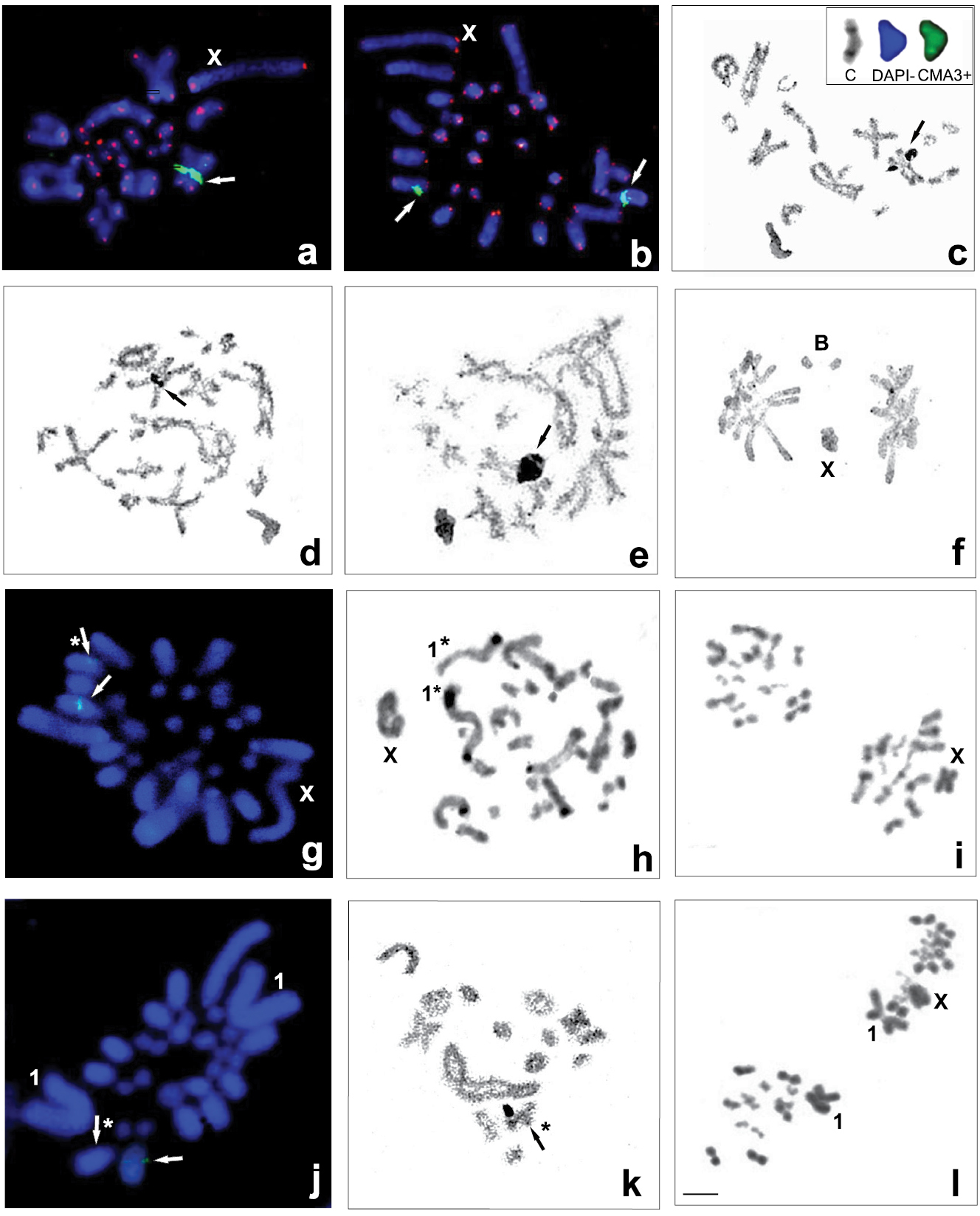
|
||
|
Examples of chromosome banding in different species of the tribes Eupholidoptera (a–c) and Parapholidoptera with 2n = 31 (d–i) and 2n = 29 (j–l) studied using different techniques. 18S rDNA FISH revealed a single interstitial cluster (per haploid genome) located in the 3/4 or 4/5 bivalent (a, b, g, j) and co-localized with the active NOR visualized by AgNO3 staining (c–e, k). a E. astyla, diakinesis and b E. megastyla, spermatogonial metaphase with 18S rDNA loci (green, arrows) located close to the paracentromeric region of bivalent 3/4 and telomeric DNA probes (red) c E. schmidti, diakinesis with NOR (arrow) and selected C+, DAPI- and CMA3+ bands located interstitially on 3/4 bivalent (in the right corner) dP. cf. belen and e P. distincta, diplotene, arrows indicate NOR located in the middle of bivalent 3/4 f P. distincta, anaphase I with B chromosomes g, h, i P. grandis g spermatogonial metaphase with the rDNA cluster with different size between homologous chromosomes (arrows) h heterochromatin heteromorphism in respect to the pattern of C-bands in the first autosome pair (1, asterisks) i two metaphase II with bi-armed X chromosome j, k, lP. aff. syriacaj spermatogonial metaphase, rDNA-FISH signal present/absent in homologous chromosomes (arrows and an asterisk) correspond to k NOR l two metaphase II with bi-armed first pair of autosomes (1) and acrocentric X. Bar = 10 µm. |